In November 2018, archaeologists made a groundbreaking discovery in the heart of Egypt’s Saqqara necropolis – the tomb of Wahtye, a high-ranking priest from the Fifth Dynasty. This well-preserved tomb, dating back over 4,400 years, offers an exceptional glimpse into the life of an ancient Egyptian priest and the cultural vibrancy of the Old Kingdom. With vivid reliefs and intricate burial shafts, the tomb not only illuminates Wahtye’s personal journey but also reveals the complex interplay between life, death, and the afterlife in ancient Egyptian society.
Who Was Wahtye?
Wahtye was not just an ordinary individual from ancient Egypt. He was a high-ranking priest who served under King Neferirkare Kakai during the Fifth Dynasty. His tomb provides an essential insight into the complex and multifaceted society of ancient Egypt. Priests in ancient Egypt played an influential role in religious and social affairs, often bridging the divine with the mortal world. Wahtye’s position, therefore, would have been one of considerable prestige and responsibility. He was deeply connected to the religious practices of the time, particularly those associated with the afterlife and the veneration of deities. His tomb stands as a testament to his status and his significant role in Egypt’s cultural and spiritual life.

Video
Watch the video Unveiling History: The 4,400-Year-Old Tomb of Wahtye to uncover the secrets of one of Egypt’s most remarkable ancient discoveries.
The Tomb’s Remarkable Preservation
The most striking feature of Wahtye’s tomb is its extraordinary preservation. Despite being nearly 4,400 years old, the tomb’s colors are vibrantly intact, a testament to the advanced craftsmanship and construction techniques of the time. This remarkable preservation was a great surprise to archaeologists, as many ancient Egyptian tombs have suffered significant damage over the millennia due to natural erosion and human intervention. Yet, Wahtye’s tomb survived remarkably well, allowing modern archaeologists and scholars to experience a slice of life from the Old Kingdom.
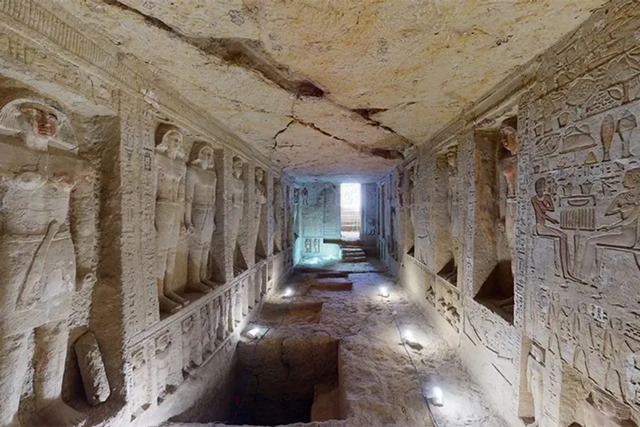
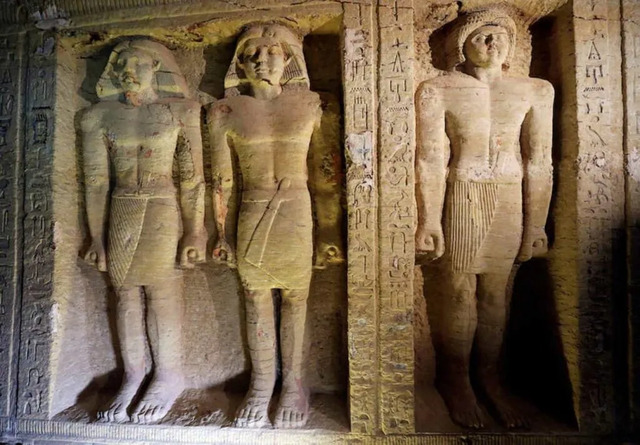
The vibrant reliefs adorning the walls of the tomb depict scenes of Wahtye’s life and his family, all rendered with striking naturalism. These vivid colors have survived through the centuries, offering an exceptional glimpse into the artistry of ancient Egypt. The tomb’s intact state makes it a rare and invaluable find, as such preserved examples are not common in Egyptology.
The Design and Layout of the Tomb
The tomb of Wahtye is situated in the Saqqara necropolis, an ancient burial ground that housed numerous notable figures from Egypt’s Old Kingdom. Measuring approximately 10 meters in length and 3 meters in width, the tomb is made of limestone blocks, showcasing the architectural skill of the time. The structure of the tomb reflects the ancient Egyptians’ belief in the afterlife, with detailed walls and interior chambers designed to ensure the deceased’s journey to the afterlife.
Inside the tomb, four burial shafts were discovered. One of these shafts was incomplete and empty, while the remaining three contained the remains of Wahtye and his family members. This setup indicates the importance of family in ancient Egyptian society, where individuals were often buried alongside their loved ones to ensure their protection and companionship in the afterlife.

Artistic Revelations: The Wall Reliefs
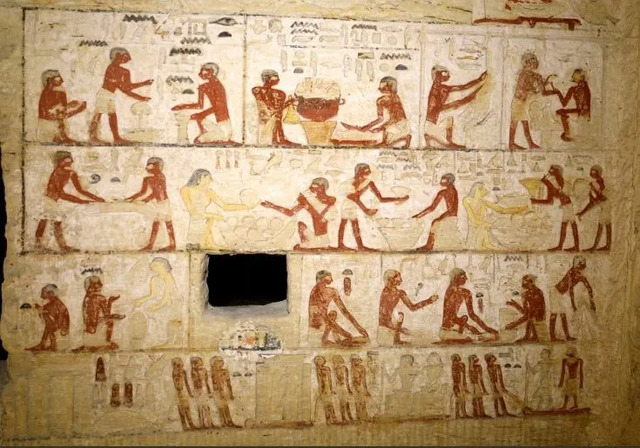
The most significant artistic feature of Wahtye’s tomb is the vivid wall reliefs that decorate its interior. These reliefs depict various scenes from Wahtye’s life, providing insight into his daily activities, social status, and the artistic traditions of the Old Kingdom. Wahtye is shown alongside his wife, Weret Ptah, and his children, and the scenes portray activities such as hunting, fishing, and playing music. These depictions not only celebrate Wahtye’s life but also reflect the artistic style of the Fifth Dynasty, which is renowned for its vibrant colors and naturalistic representations of the human form.
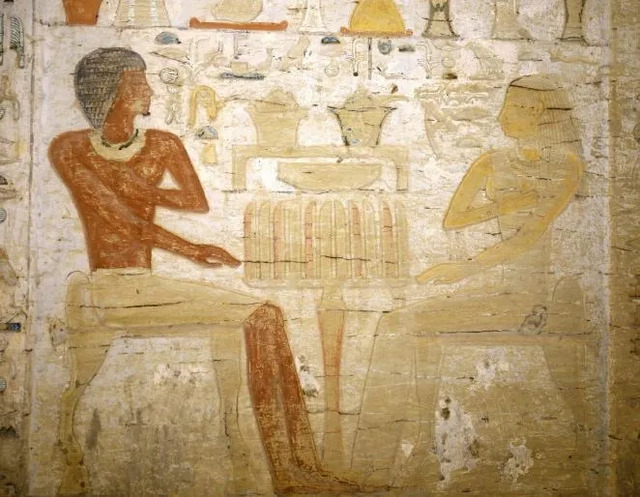
One notable aspect of the reliefs is the way they emphasize the connection between Wahtye and his family. The scenes are designed to ensure that Wahtye’s family would be with him in the afterlife, and these artistic representations served both as commemorations and as tools for the soul’s journey through the realm of the dead.
The Four Burial Shafts and the Discovery of Wahtye’s Family
The four burial shafts within Wahtye’s tomb provide a deeper connection to the personal history of the priest. The first shaft was empty, and the other three contained the remains of Wahtye and his family. This discovery prompted many questions regarding the cause of death for Wahtye and his loved ones. While the exact cause remains uncertain, various theories have emerged, including the possibility of disease or famine, which were not uncommon in ancient Egypt. The fact that Wahtye’s family was buried with him reinforces the importance of family bonds in ancient Egyptian society, especially regarding the afterlife.
The presence of these burial shafts also adds to the mystique of the tomb. The inclusion of multiple individuals in the same burial site reflects the belief that family members would need each other’s support in the afterlife. This communal burial practice was common among the elite of ancient Egypt, where the family’s social status and unity were celebrated even after death.
The Legacy of Wahtye and the Tomb’s Impact
Wahtye’s tomb provides a glimpse into the lives of Egypt’s elite during the Old Kingdom, offering scholars invaluable insights into the cultural, social, and religious practices of the time. The exceptional preservation of the tomb and its artistic details have made it one of the most significant archaeological finds of recent years. The tomb serves as a reminder of the grandeur and sophistication of ancient Egyptian society, where art, religion, and social structure were intricately woven together.
Moreover, the tomb of Wahtye helps to shed light on the role of priests in ancient Egypt. As individuals who bridged the gap between the gods and the people, priests like Wahtye held considerable influence over both spiritual and secular matters. The tomb’s reliefs and inscriptions provide valuable information about the priestly class’s role and their connection to the divine.
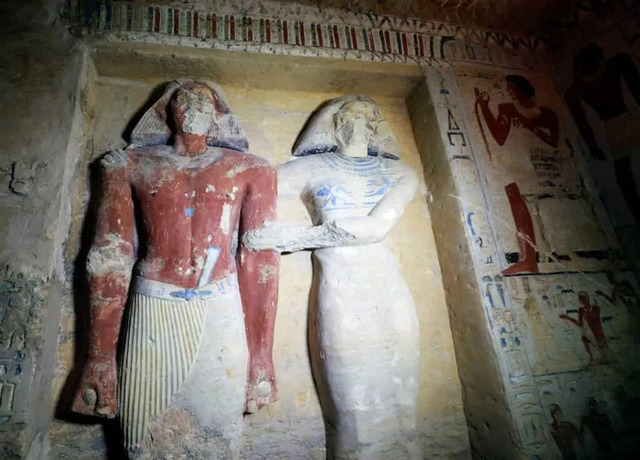
The Media and Public Attention
The discovery of Wahtye’s tomb garnered significant media attention, especially with the release of the Netflix documentary Secrets of the Saqqara Tomb. The film captured the emotional journey of the archaeologists, highlighting the challenges they faced during the excavation process and the thrill of each new revelation. Through stunning cinematography and intimate storytelling, the film brought the tomb’s discovery to the global audience, allowing viewers to experience the excitement of unearthing an ancient treasure.
The documentary also provided a behind-the-scenes look at the work of archaeologists, from the initial excavation to the painstaking process of analyzing the tomb’s contents. The media’s portrayal of the tomb’s discovery contributed to global fascination with Egyptology and helped raise awareness about the importance of preserving these ancient treasures for future generations.
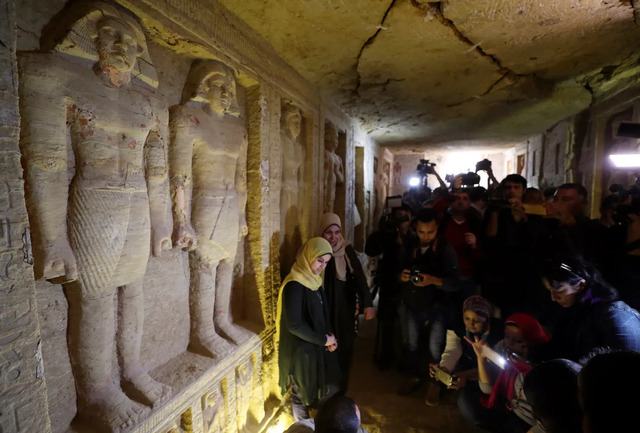
Conclusion: The Enduring Mystique of Wahtye’s Tomb
The tomb of Wahtye is a remarkable testament to the artistry, culture, and beliefs of ancient Egypt. Its discovery has not only provided scholars with invaluable insights into the life of a high-ranking priest but also helped illuminate the role of religion and family in ancient Egyptian society. The tomb’s preservation, its vivid reliefs, and the presence of Wahtye’s family members within the burial shafts all contribute to its significance as one of the most important archaeological finds of recent years.
As we continue to explore and unearth the treasures of Egypt’s past, the tomb of Wahtye serves as a reminder of the complexity and sophistication of one of the world’s oldest civilizations. Through the stories of individuals like Wahtye, we gain a deeper understanding of the ancient world and its lasting legacy in our own.
Video
Watch the documentary The Buried Treasure of Saqqara to follow the thrilling excavation of an ancient Egyptian treasure, revealing secrets of a lost civilization.



